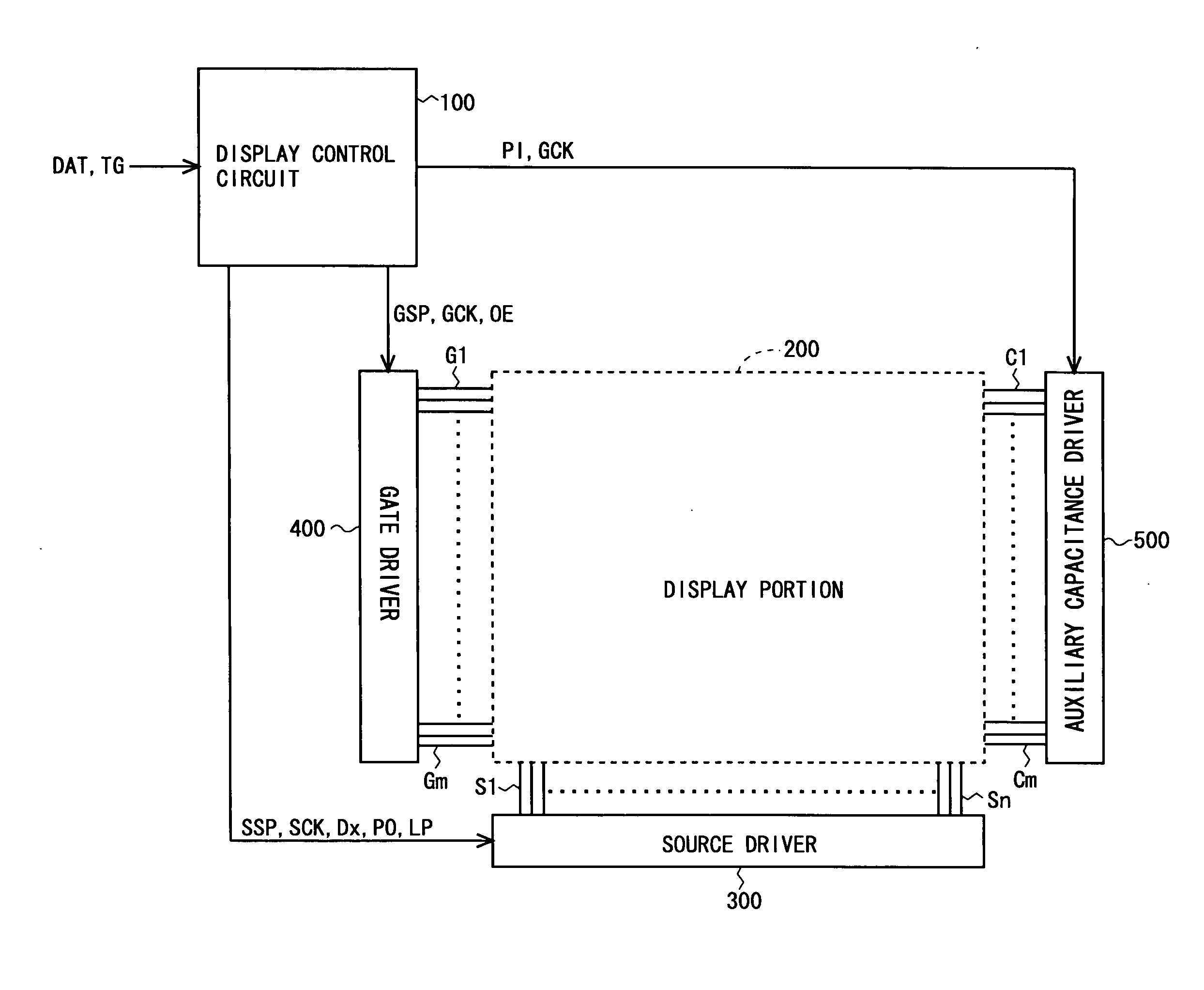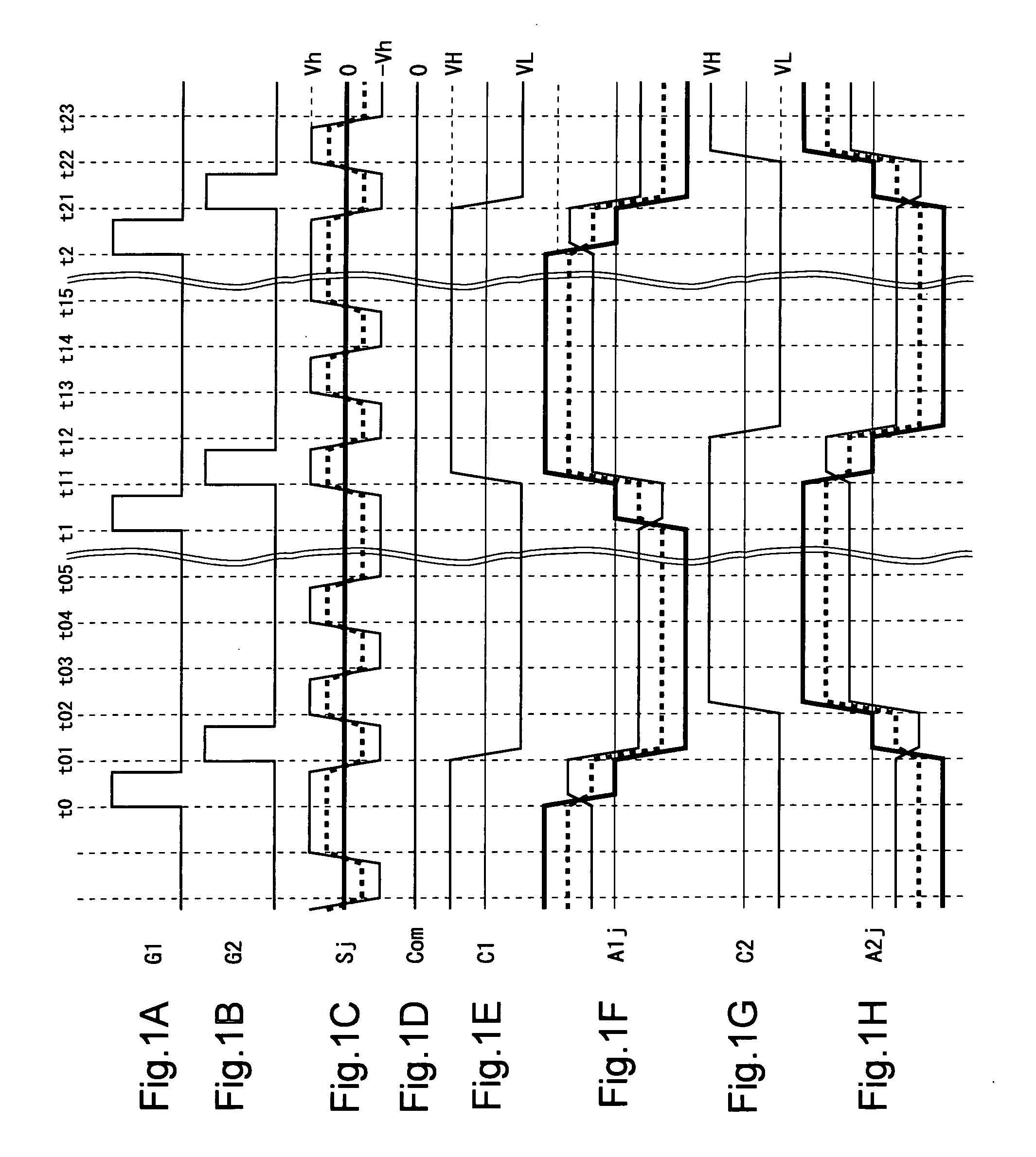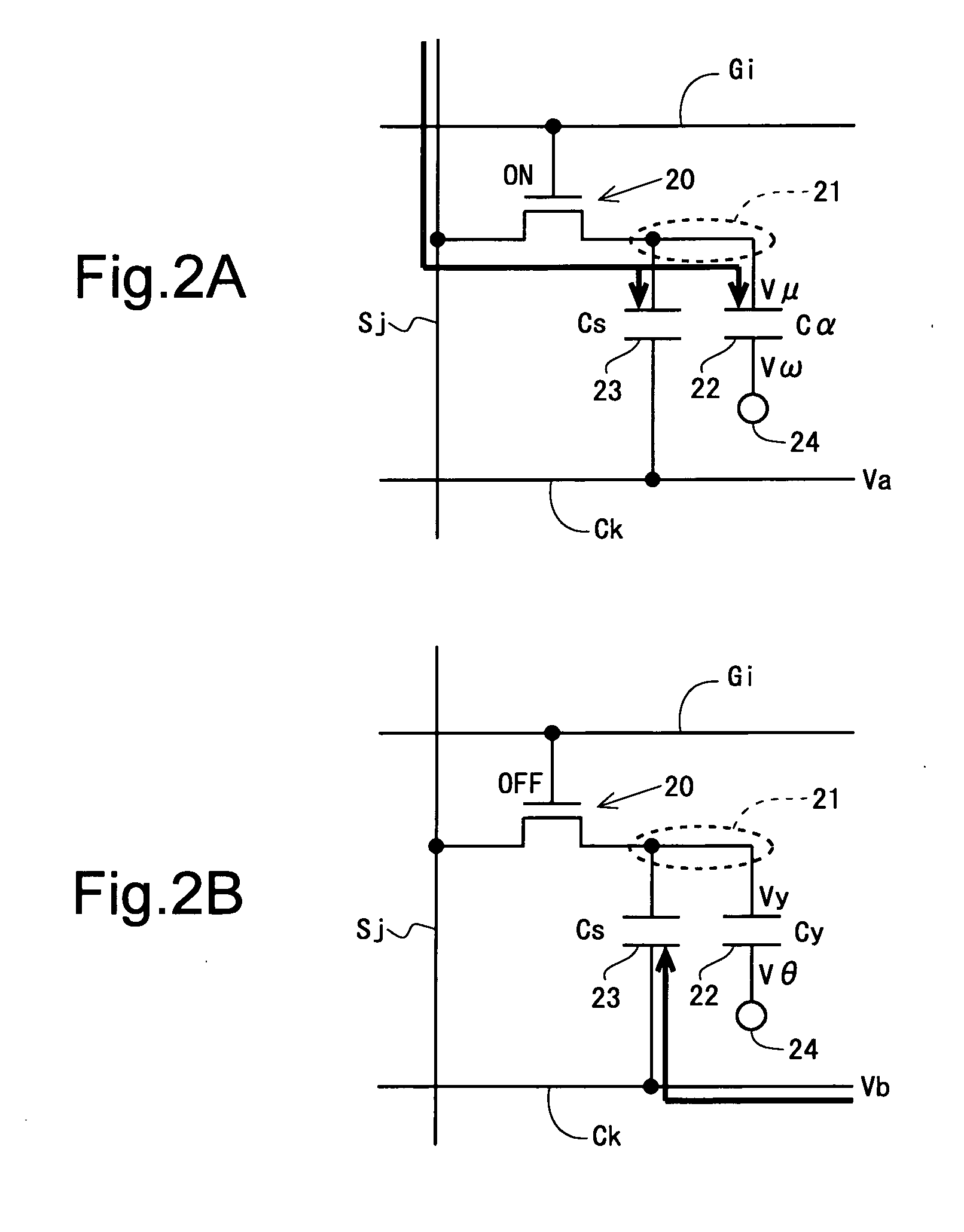Display device and drive method for the same
a technology of a display device and a drive method, which is applied in the field of display devices, can solve the problems of unsatisfactory display quality, and achieve the effects of stable voltage, reduced amplitude of video signals, and redistribution of charge amounts
- Summary
- Abstract
- Description
- Claims
- Application Information
AI Technical Summary
Benefits of technology
Problems solved by technology
Method used
Image
Examples
first embodiment
2. First Embodiment
2.1 Overall Configuration and Operation
[0130]FIG. 6 is a block diagram illustrating the overall configuration of a liquid crystal display device according to a first embodiment of the present invention. The liquid crystal display device includes a display control circuit 100, a display portion 200, a source driver (video signal line driver circuit) 300, a gate driver (scanning signal line driver circuit) 400, and an auxiliary capacitance driver (auxiliary capacitance electrode driver circuit) 500. In the following descriptions, the source driver 300, the gate driver 400, and the auxiliary capacitance driver 500 are also collectively referred to as drivers (driver circuits). FIG. 7 is a block diagram illustrating detailed configurations of the drivers and the display portion 200 in the liquid crystal display device. Note that descriptions will be provided on the assumption that a 256 gray-scale gradation display is performed in the liquid crystal display device.
[01...
second embodiment
3. Second Embodiment
3.1 Configuration
[0164]FIG. 10 is a block diagram illustrating detailed configurations of drivers and a display portion 200 in a liquid crystal display device according to a second embodiment of the present invention. In the present embodiment, an opposing electrode driver 600 for driving an opposing electrode 24 is provided, along with components in the first embodiment. Also, the source output circuit in the source driver is configured differently from that of the first embodiment. Other components are the same as those of the first embodiment, and therefore any descriptions thereof will be omitted.
[0165]The opposing electrode driver 600 is provided with an opposing electrode polarity signal PC from the display control circuit 100. The opposing electrode driver 600 drives the opposing electrode 24 based on the opposing electrode polarity signal PC. Specifically, the opposing electrode driver 600 provides the opposing electrode 24 with a voltage of 0V alternatin...
third embodiment
4. Third Embodiment
4.1 Configuration
[0184]In a liquid crystal display device according to the present embodiment, general configurations of the drivers and the display portion 200 are the same as in the second embodiment shown in FIG. 10. However, there are differences from the second embodiment in terms of the magnitude of a voltage provided to the auxiliary capacitance lines C1 to Cm from the auxiliary capacitance driver 500 and the magnitude of a voltage provided to the opposing electrode 24 from the opposing electrode driver 600. Specifically, while in the second embodiment, the first-period opposing electrode voltage Vω is set to be equal in magnitude to the source voltage having a gray-scale value of “255” (a voltage of 0V or the source high voltage Vh), in the present embodiment, the first-period opposing electrode voltage Vω is set to be “−Vd” on the low-potential side and “Vh+Vd” on the high-potential side. In this manner, in the present embodiment, the amplitude of the opp...
PUM
 Login to View More
Login to View More Abstract
Description
Claims
Application Information
 Login to View More
Login to View More - R&D
- Intellectual Property
- Life Sciences
- Materials
- Tech Scout
- Unparalleled Data Quality
- Higher Quality Content
- 60% Fewer Hallucinations
Browse by: Latest US Patents, China's latest patents, Technical Efficacy Thesaurus, Application Domain, Technology Topic, Popular Technical Reports.
© 2025 PatSnap. All rights reserved.Legal|Privacy policy|Modern Slavery Act Transparency Statement|Sitemap|About US| Contact US: help@patsnap.com



